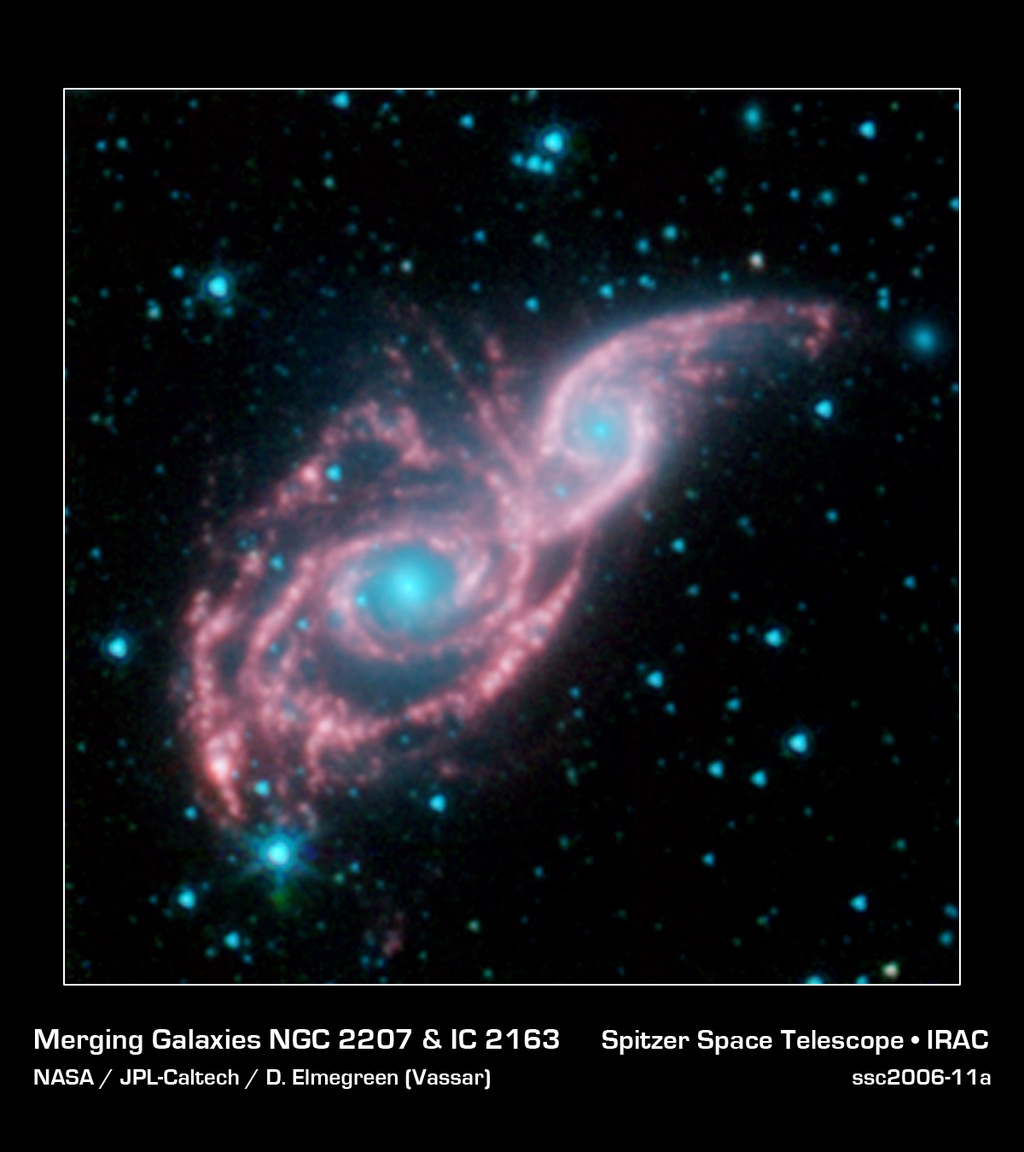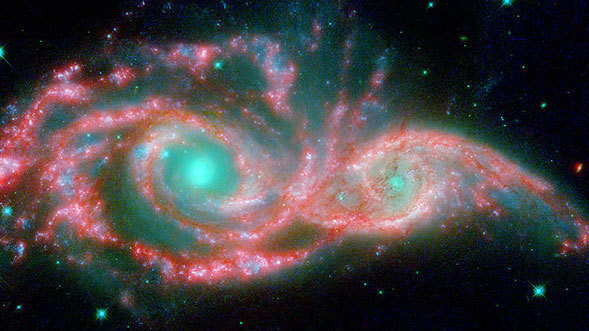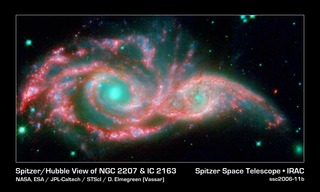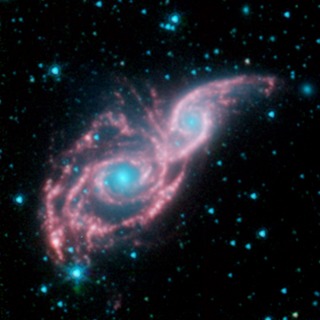
Credit: NASA/JPL-Caltech/D. Elmegreen (Vassar)
Observation • April 26th, 2006 • ssc2006-11a
ssc2006-11a
Something appears to be peering through a shiny red mask, in this new infrared image from NASA's Spitzer Space Telescope. The mysterious blue eyes are actually starlight from the cores of two merging galaxies, called NGC 2207 and IC 2163. The mask is the galaxies' dusty spiral arms.
NGC 2207 and IC 2163 recently met and began a sort of gravitational tango about 40 million years ago. The two galaxies are tugging at each other, stimulating new stars to form. Eventually, this cosmic ball will come to an end, when the galaxies meld into one. The dancing duo is located 140 million light-years away in the Canis Major constellation.
The Spitzer image reveals that the galactic mask is adorned with strings of pearl-like beads. These dusty clusters of newborn stars, called "beads on a string" by astronomers, appear as white balls throughout the arms of both galaxies. They were formed when the galaxies first interacted, forcing dust and gas to clump together into colonies of stars.
This type of beading has been seen before in other galaxies, but it took Spitzer's infrared eyes to identify them in NGC 2207 and IC 2163. Spitzer was able to see the beads because the stars inside heat up surrounding dust, which then radiates with infrared light.
The biggest bead lighting up the left side of the mask is also the densest. In fact, some of its central stars might have merged to form a black hole. (Now, that would be quite the Mardi Gras mask!)
This picture, taken by Spitzer's infrared array camera, is a four-channel composite. It shows light with wavelengths of 3.6 microns (blue); 4.5 microns (green); and 5.8 and 8.0 microns (red). The contribution from starlight (measured at 3.6 microns) has been subtracted from the 5.8- and 8-micron channels to enhance the visibility of the dust features.
About the Object
- Name
- NGC 2207 • IC 2163
- Type
- Galaxy > Type > Spiral
- Galaxy > Type > Interacting
- Galaxy > Grouping > Pair
- Distance
- 140,000,000 Light Years
Color Mapping
| Band | Wavelength | Telescope |
| Infrared | 3.6 µm | Spitzer IRAC |
| Infrared | 4.5 µm | Spitzer IRAC |
| Infrared | 5.8 µm | Spitzer IRAC |
| Infrared | 8.0 µm | Spitzer IRAC |
Astrometrics
- Position (J2000)
- RA =6h 16m 21.0s
- Dec = -21° 21' 13.5"
- Field of View
- 5.0 x 5.0 arcminutes
- Orientation
- North is 148.7° right of vertical







